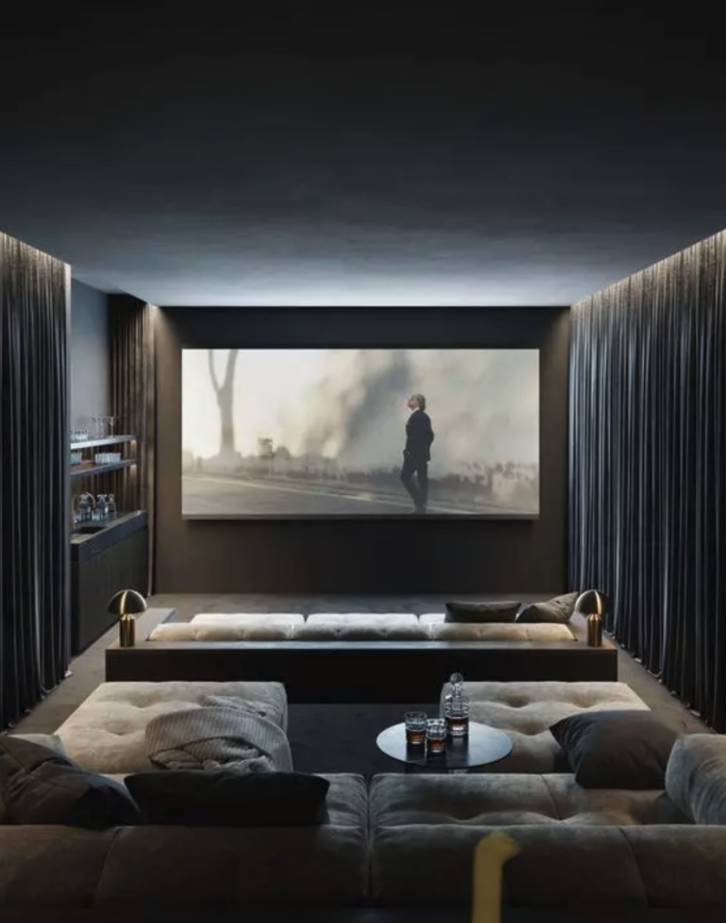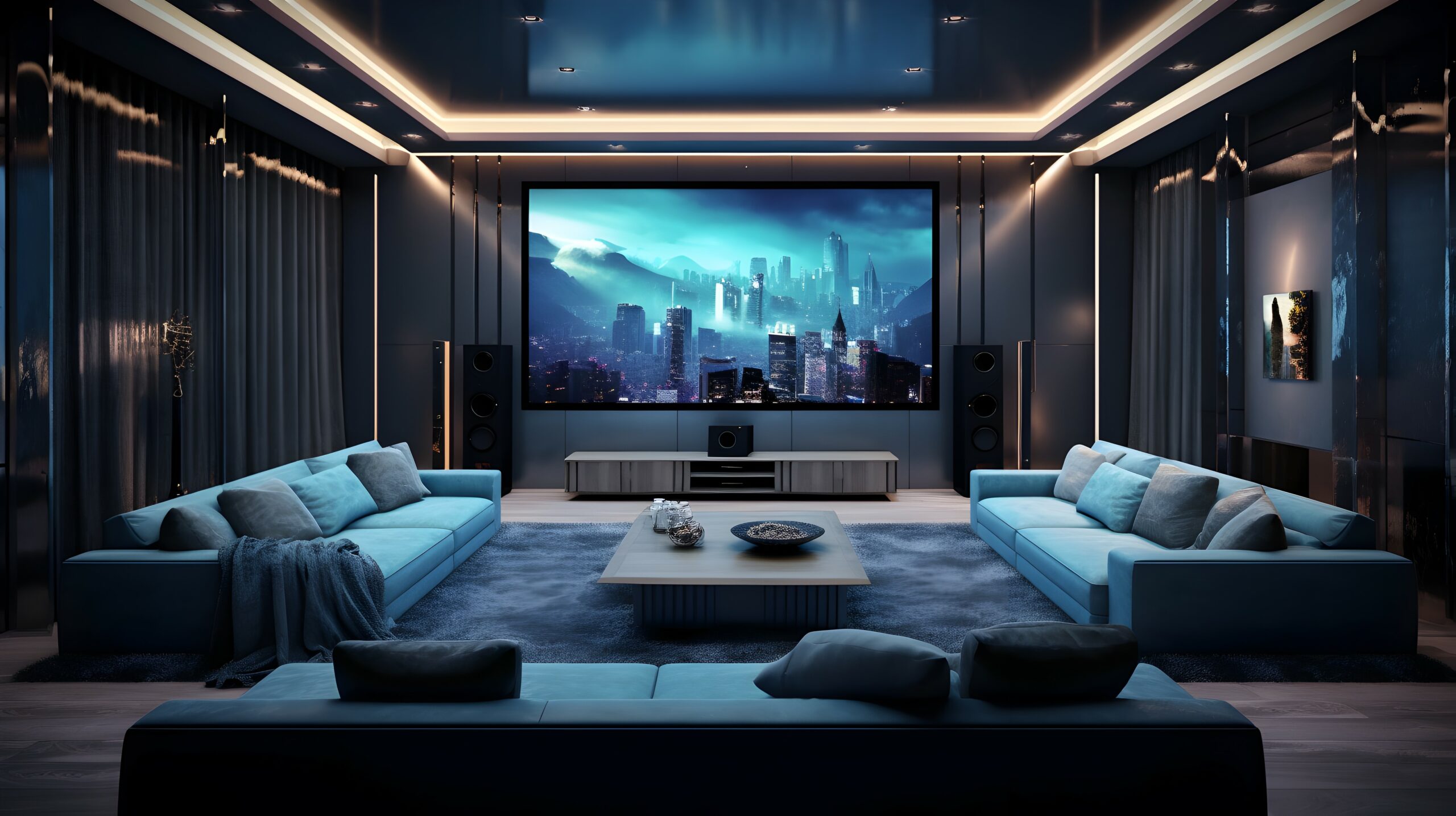Home Theater Tampa: Bringing Cinematic Experiences Right to Your Door
Wiki Article
Home Theater 101: Everything You Required to Know for a Cinematic Experience at Home
Creating a home theater that matches the motion picture experience of an industrial theatre includes cautious consideration of multiple elements, consisting of screen selection, audio systems, and area design. Whether you are considering the optimal display dimension or the details of border audio, understanding these principles is essential.Picking the Right Screen
When establishing up a home theater, selecting the ideal display can make or damage the watching experience - tampa home theater installation. The screen offers as the centerpiece of your setup, influencing photo top quality, viewing angles, and overall aesthetic. Trick elements to consider consist of screen size, resolution, and typeInitially, establish the suitable screen size based on your room measurements and seating distance. A general guideline is to sit roughly 1.5 to 2.5 times the angled screen dimension for optimal viewing. Next off, pick in between various screen kinds, such as fixed-frame, motorized, or retractable screens, each offering unique advantages. Fixed-frame displays normally provide the most effective picture top quality, while mechanized options permit flexibility precede usage.
Resolution is an additional important aspect. For a truly immersive experience, consider a display made for 4K or even 8K web content, making sure intensity and clearness. Additionally, consider the display's gain, which influences brightness and comparison; a greater gain can improve brightness in well-lit rooms, while a reduced gain may be better for darker settings.
Picking Sound Equipment
Audio tools is a vital component of any home theater system, significantly enhancing the total viewing experience. The option of audio equipment can identify the deepness, quality, and immersion of noise, important for producing a motion picture environment.When choosing audio equipment, consider a surround stereo, which normally includes a receiver, several audio speakers, and a speaker. A 5.1 or 7.1 network system is advised, where the first number represents the speakers and the second the subwoofer, providing an immersive soundscape. The receiver is the heart of the system, managing sound and video clip signals, and should support modern-day formats like Dolby Atmos for an improved spatial experience.
Quality speakers are essential; search for designs that offer a balanced noise account with good bass feedback. Floor-standing audio speakers can generate richer sound, while shelf alternatives save room. Furthermore, think about wireless options for ease of setup, although wired systems commonly supply superior efficiency.

Optimal Seating Plans
Creating an excellent home cinema experience pivots considerably on ideal seating arrangements. The arrangement of seats plays a critical role in both comfort and watching high quality, straight affecting the general motion picture experience.First, take into consideration the display dimension and watching distance. A common guideline is to place seats at a distance roughly 1.5 to 2.5 times the angled size of the screen. This makes sure an immersive experience without stressing the eyes.
Next, altitude is essential. If your seats remains in a tiered style, the back rows need to be more than the front to avoid obstructions. For flat seats, guarantee that the front row is not also near the display, and that everyone has a clear line of vision.
Additionally, think about the setup in terms of social dynamics. Team seats can improve the public experience, while private seats might be liked for individual viewing.

Lastly, focus on comfort with ergonomic seats that sustains prolonged viewing periods. Incorporating reclining chairs or supported seats can dramatically enhance the experience, making the home movie theater a preferred destination for both enjoyment and leisure.
Lighting and Ambiance
Reliable illumination and atmosphere are essential components of a well-designed home movie theater, as they significantly affect the watching experience. The ideal lighting can improve the motion picture feel, while inadequate options can detract from it. For ideal results, consider a layered illumination approach that includes ambient, job, and accent illumination.Ambient lights offers general lighting, ensuring that the area is not totally dark, which can stress the eyes. Dimmer buttons are highly advised, permitting adjustments based upon the content being checked out. Job lights, such as wall surface sconces or flooring lights, uses practical lighting for activities like reading or navigating the space without this website disrupting the total environment.
Accent lights can be used to highlight architectural features or develop prime focus, including depth and rate of interest to the area. LED strip lights behind screens or along shelves can provide a subtle radiance that improves the visual experience without frustrating the visitor.

Wiring and Installation Tips
A well-planned circuitry setup is crucial for attaining ideal efficiency in your home theater system. Correct circuitry not only ensures premium sound and video clip signals yet also enhances the overall visual of your space. Begin by drawing up your layout, recognizing where each component will be placed, including your screen, audio speakers, and receiver.When picking cables, prioritize high-quality, appropriately evaluated electrical wiring to decrease signal loss. HDMI wires should be made use of for video connections, while speaker cable must match the specifications of your speakers and amplifier. Choose in-wall ranked cables to conform with safety and security criteria and keep a tidy appearance.

Verdict
In summary, creating a remarkable home theater experience requires mindful factor to consider of different aspects, consisting of display selection, audio equipment, seating setups, illumination, and wiring. Each part plays a critical function in attaining optimum efficiency and ambiance, inevitably enhancing the enjoyment of home amusement. By focusing on these elements, a cinematic environment can be efficiently replicated, permitting immersive watching experiences that equal conventional movie theater setups. Focus to information in each area is necessary for general fulfillment.Creating a home theater that equals the motion picture experience of a commercial theatre includes cautious consideration of numerous components, consisting of screen choice, sound systems, and room layout.When setting up a home cinema, picking Look At This the best screen can make or damage the watching experience. Next off, select in between various screen types, such as fixed-frame, mechanized, or retractable displays, each offering distinctive benefits. For a really immersive experience, consider a screen developed for 4K or even 8K material, making click for source sure sharpness and clearness.In recap, creating a phenomenal home movie theater experience needs mindful factor to consider of different elements, consisting of display option, audio tools, seating setups, illumination, and wiring.
Report this wiki page